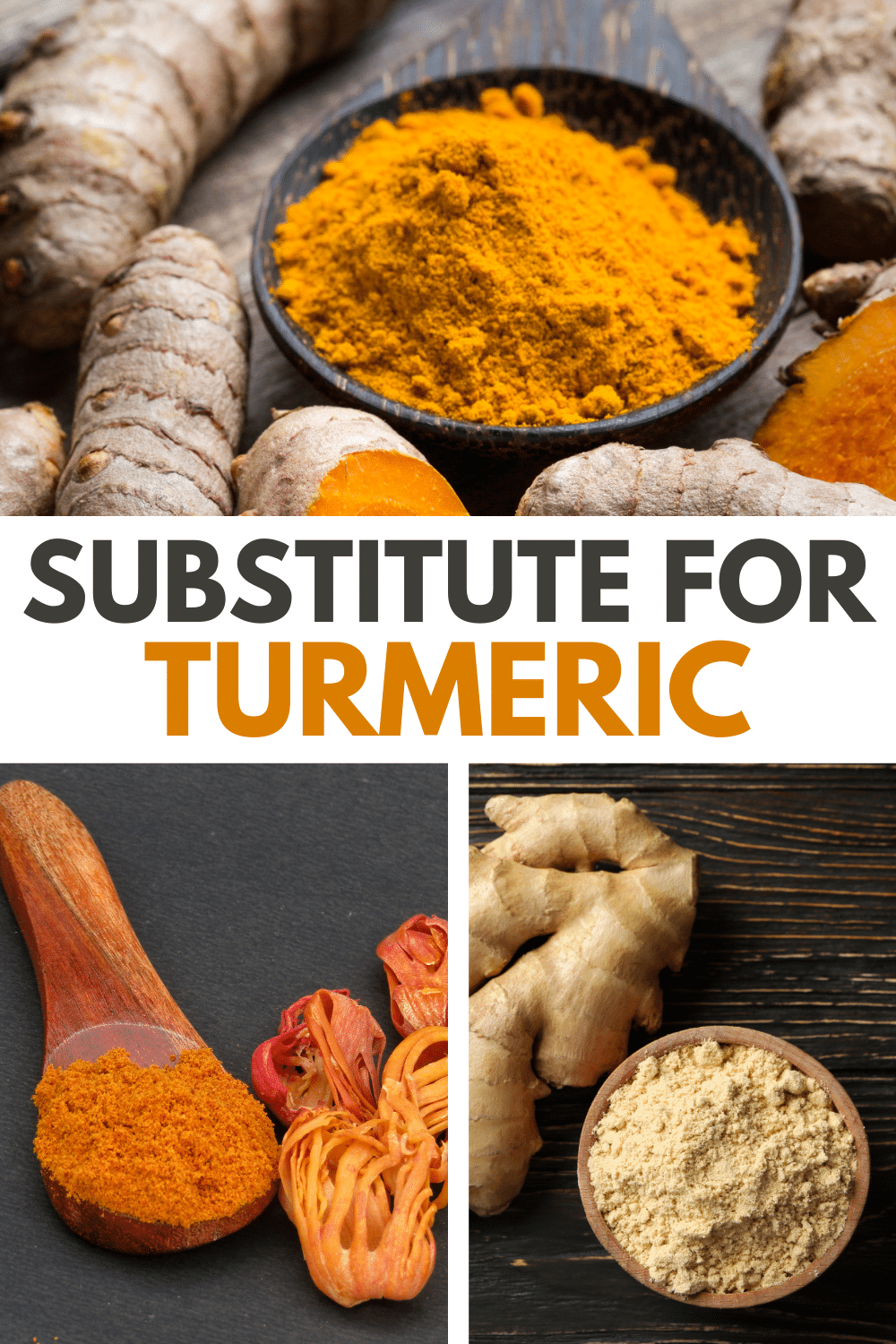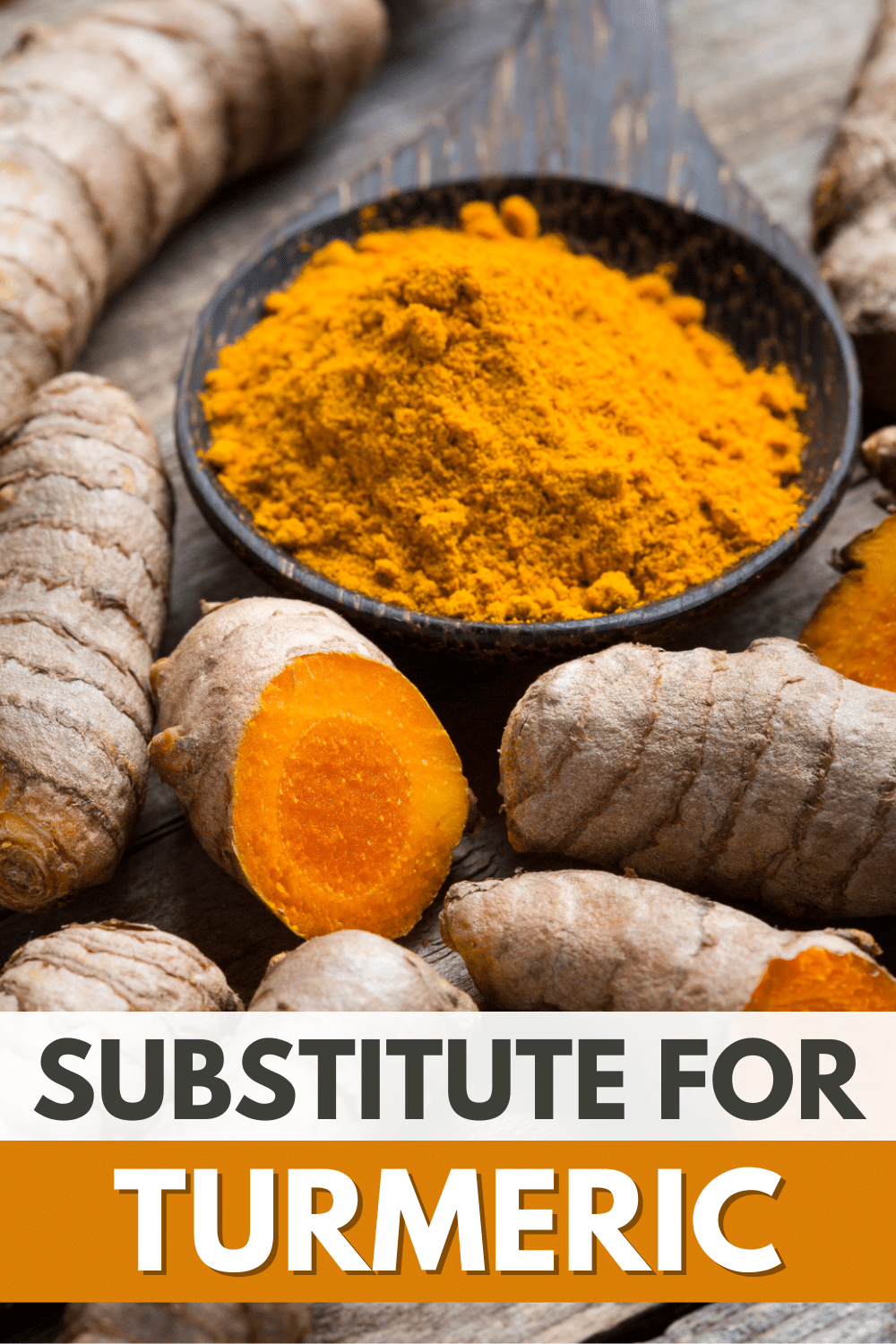If you ask me what spices you must have in your kitchen, I’d definitely say turmeric is one of them. It adds a unique distinct flavor to dishes, so you’ll find yourself using turmeric powder or fresh turmeric in some of your recipes. But in case you run out, there are great substitutes for turmeric you can use in a pinch!
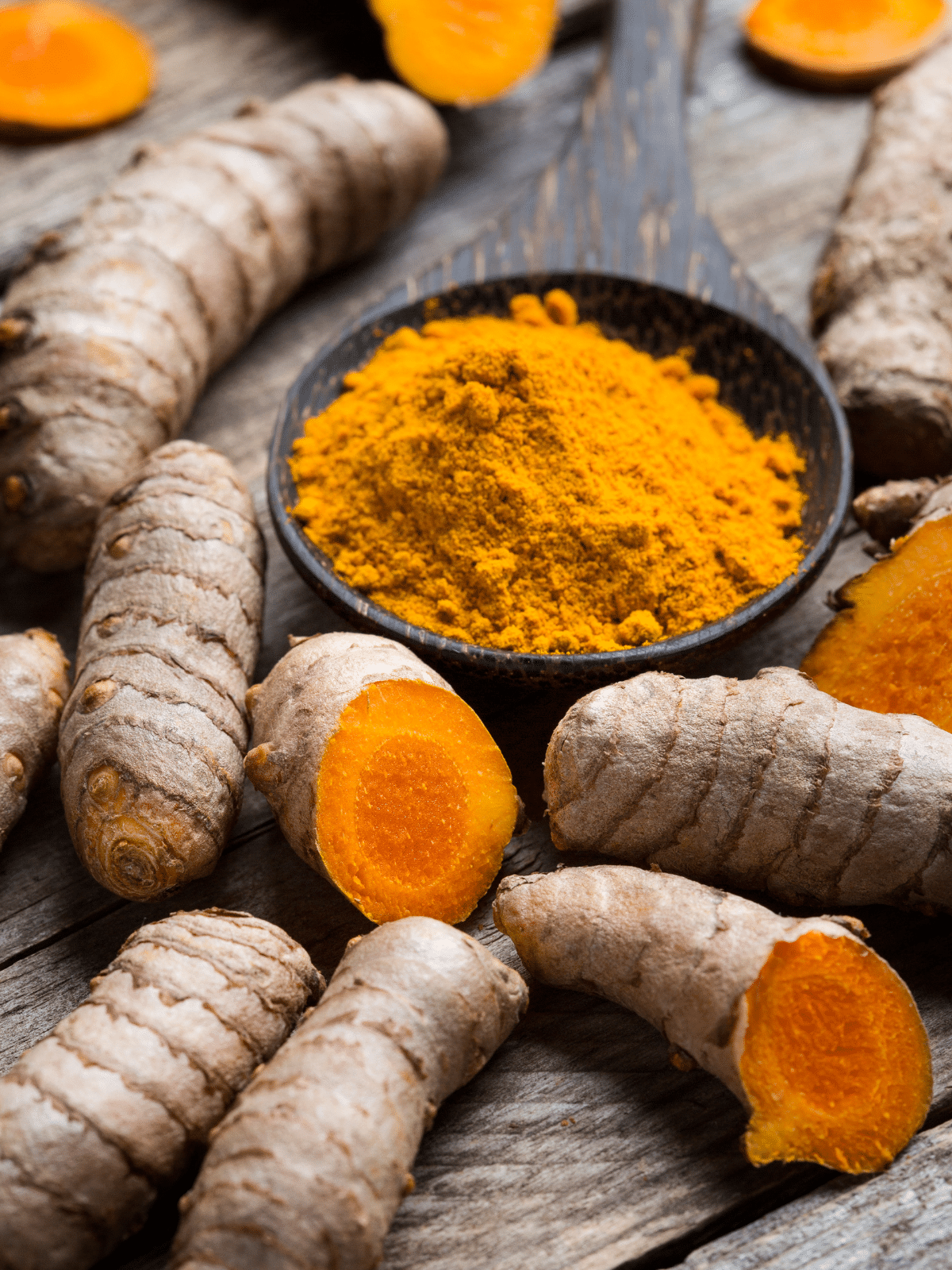
Below are the best ground turmeric substitutes that never fail. You can rely on these alternatives to replicate the vibrance or the subtle flavor turmeric adds to a dish.
Jump to:
Why You Should Know a Good Substitute for Turmeric
Availability
You may have already experienced getting ready to prepare a meal only to discover that you lack a key ingredient. Luckily, you don’t have to rush to the grocery store because you can easily replace turmeric powder.
Flavor
Turmeric’s distinct flavor is one of the reasons it’s often included in scrumptious cuisines. As distinct as it is, turmeric’s flavor profile is generally mild. That’s likely the same reason it goes well with other spices.
Color
Most curry dishes are recognizable for their vibrant sauces, all thanks to turmeric. It’s one of the primary spices included in widely used curry powders and spice blends.
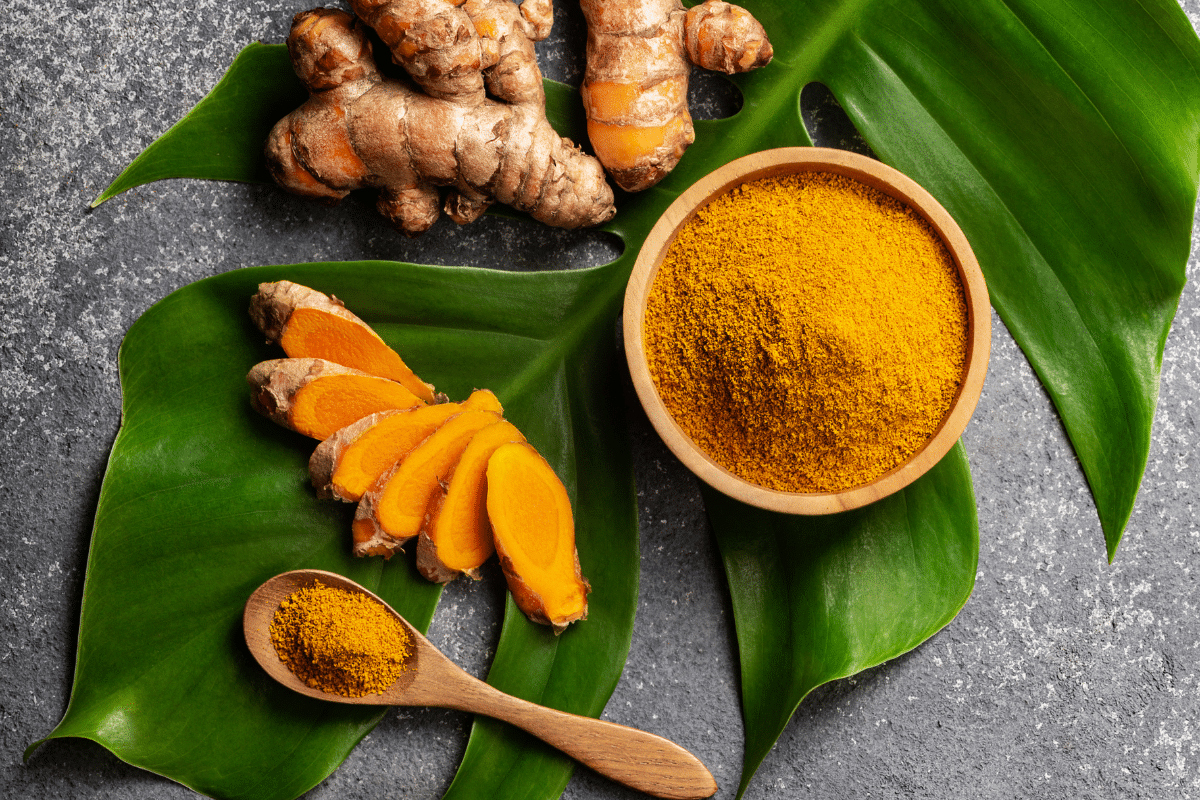
A sprinkling of turmeric is also great to use to add some color to your homemade snacks, like our Air Fryer Samosas recipe.
Depending on how vibrant you want your dish, you can add a dash or a teaspoon of turmeric powder, and it will give off a bright yellow to deep orange appearance.
While it will be difficult to mimic the exact color turmeric gives a dish, there are a number of spices that also work great in making recipes pop with a nice hue.
Best Turmeric Alternatives for Cooking and Flavor
Ginger Powder
Ginger and turmeric powders have several similarities. For instance, they both come from dried roots and are ground to produce their powdered variants.
They look alike, especially before peeling them, because they both come from the ginger plant family (Zingiberaceae). So, it makes sense for ginger powder or ground ginger to be a suitable substitute for turmeric.
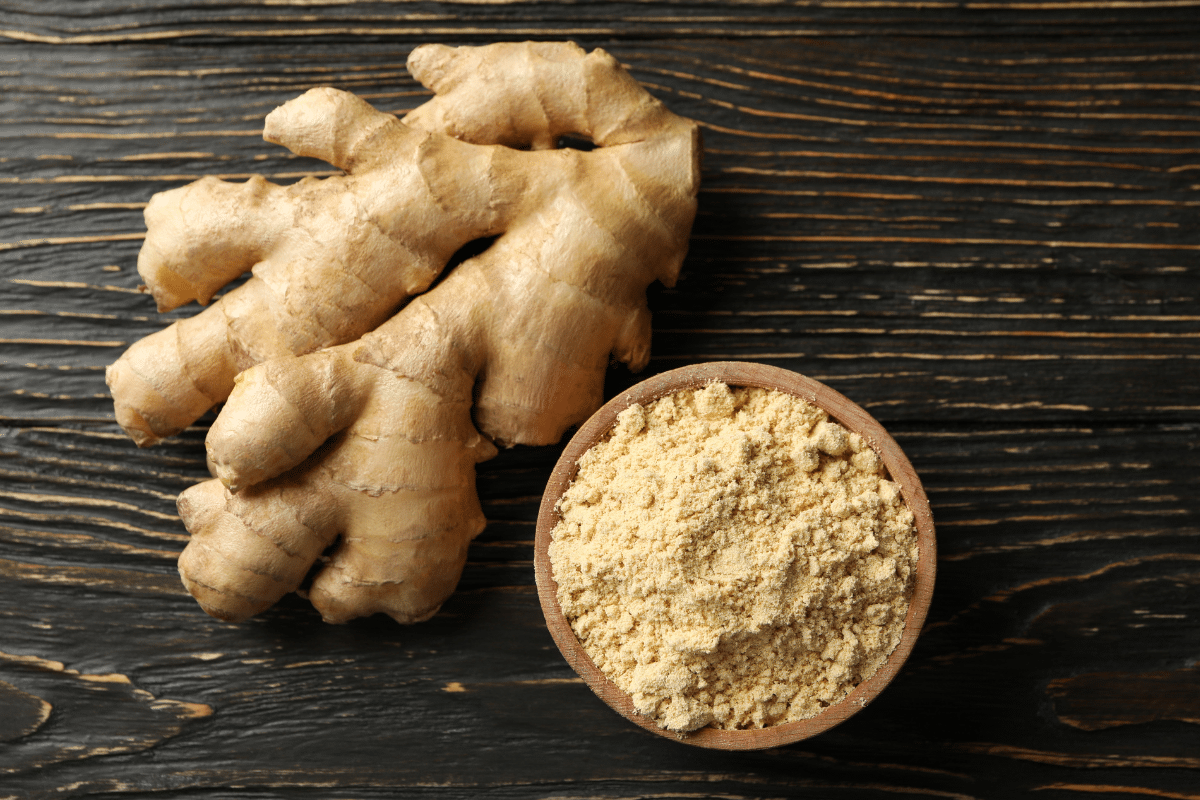
You should note that they have very distinct flavor notes. While turmeric’s familiar flavor gives off earthy and a tad bitter notes, ginger has a more pronounced spicy taste.
Replacing turmeric with ginger powder will be great for curry and soup dishes if you want to add more flavor depth. But don’t expect ginger to give your dish the same bright color that turmeric can.
If a recipe calls for one teaspoon of turmeric, you can start with just half a teaspoon of ginger powder as a replacement due to the difference in their flavor profiles.
Galangal Powder
Speaking of plants that come from the same family as turmeric and ginger, here’s galangal. Think of galangal as ginger 2.0 in terms of flavor because it provides a more intense peppery flavor but with citrusy notes. Galangal works great in curries, stews, and soups, just like turmeric and ginger.
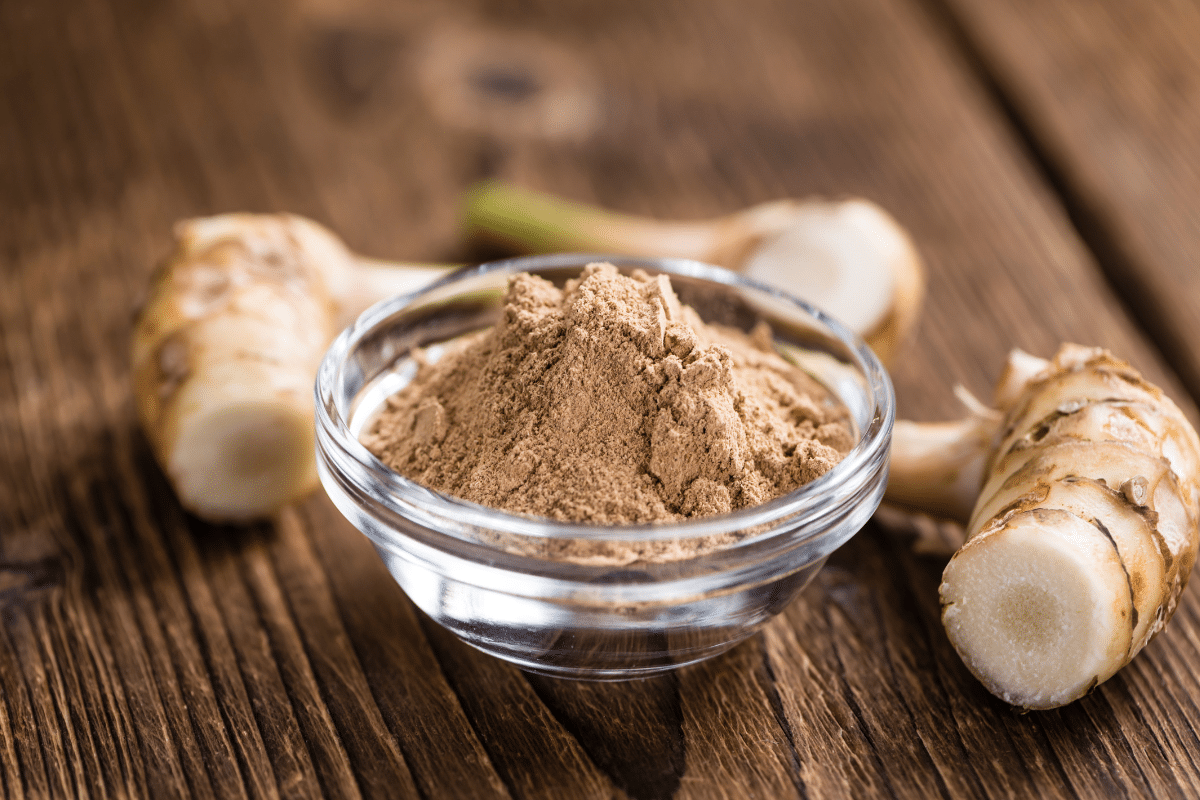
It will pack quite a spicy punch, so start with half (or less) the amount of turmeric powder indicated in your recipe. Then adjust it according to your preferred spiciness.
Curry Powder
It’s technically a blend of several spices, but turmeric is its main ingredient. So if you need a turmeric substitute for a curry dish, then it’s best to use curry powder if you have it.
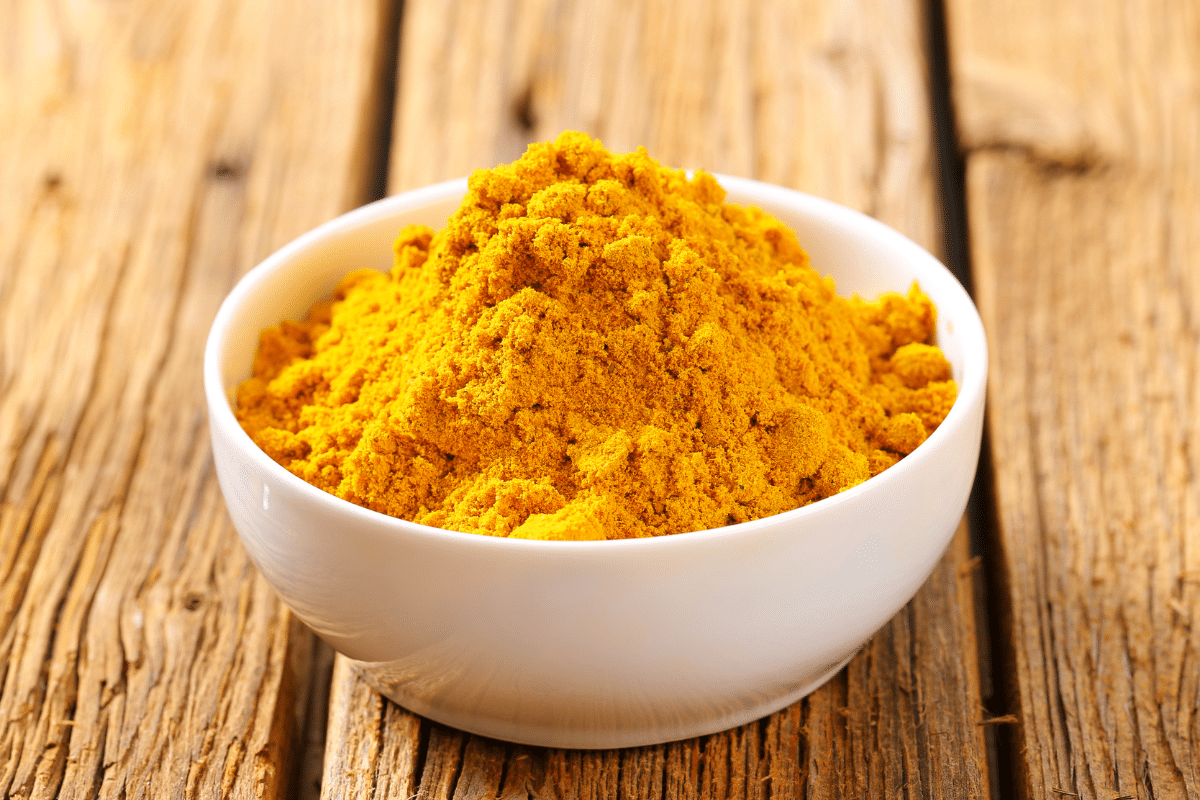
You can use curry powder in several ways. I like having this blend of spices in the kitchen because it’s versatile and can elevate the flavor of sauces, especially for South Asian and Mediterranean dishes.
It also works well in marinating meats and vegetables for grilling or roasting. You’ll get a hint of turmeric and flavors from different spices in the blend, like cinnamon, dry mustard, ginger, garlic, fennel, and more.
In terms of color, a regular curry powder often gives a deeper hue of orange, so it’s one of the closest colors you can get from a turmeric substitute.
Ground Cumin
The taste of cumin has some earthy notes, like turmeric, but it also adds a nutty flavor to a dish. If you want to retain the smoky and musky flavor profile of a dish, you can do it using ground cumin in place of turmeric.
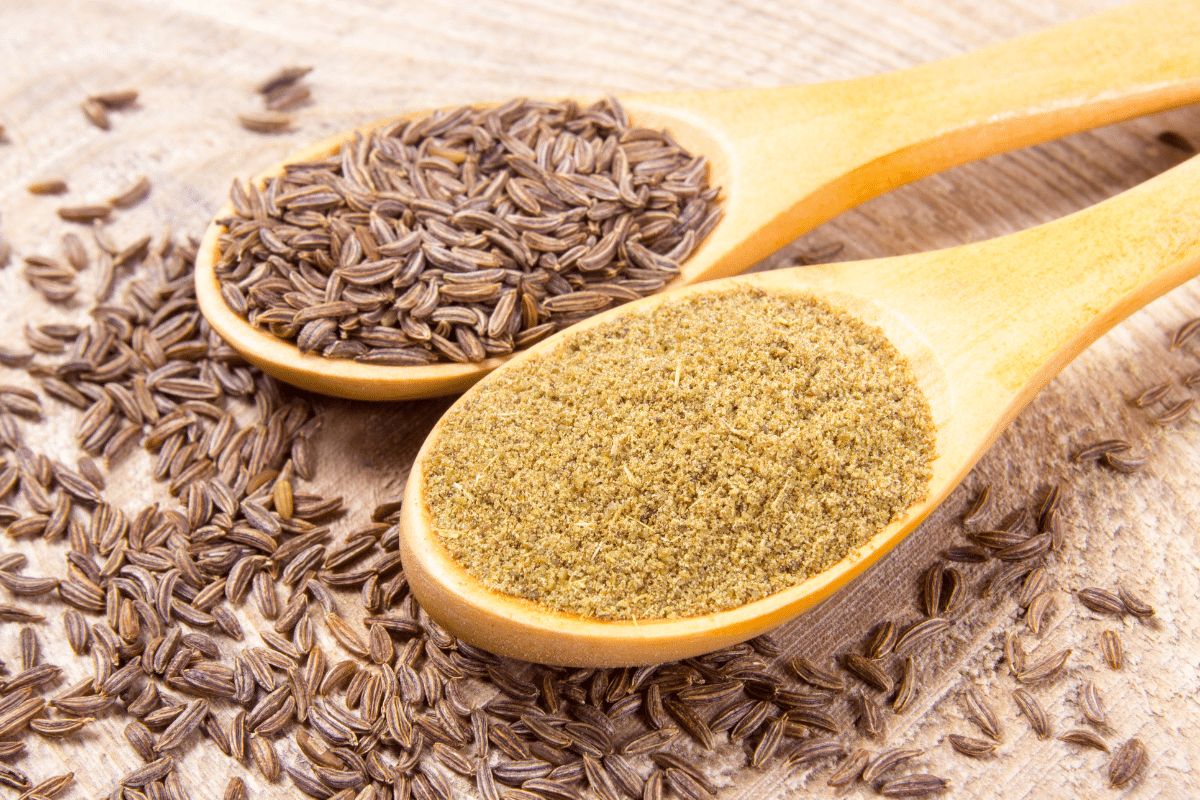
Ground cumin goes well with vegetable recipes or as an addition to rice dishes. It also tastes great in soups and curries, but won’t give your dish the same bright color as turmeric.
Smoked Paprika and Mace
This is not a spice blend that you can easily find at the store, but it’s very easy to make and would make an amazing substitute for turmeric in terms of flavor and color.
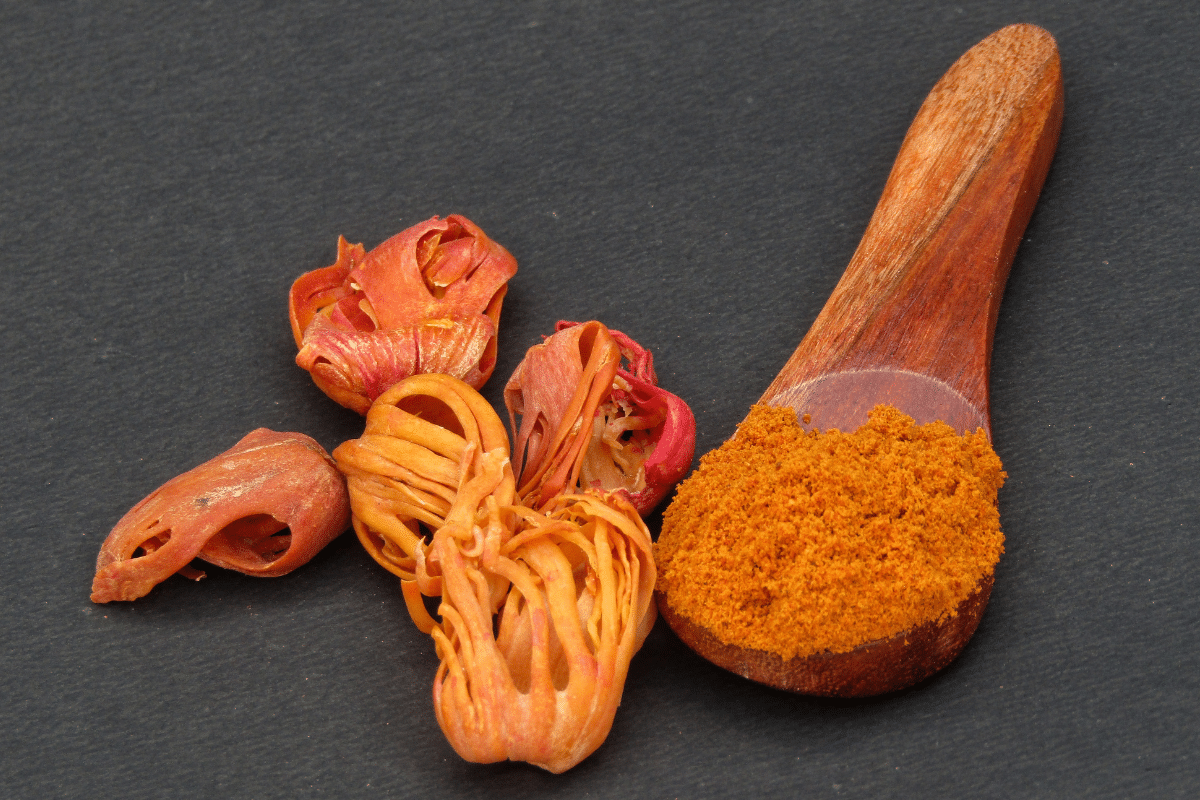
Mace is a spice related to nutmeg, but it packs more depth in aroma and flavor. It will give your dish a tad more intense hint of nutty and earthy flavor. Smoked paprika, on the other hand, adds a bit of spice and sweetness.
Simply mix equal parts of ground mace and smoked paprika to make this blend at home.
Great Substitutes for Turmeric in Terms of Color
Saffron
Saffron’s flavor profile is subtle with a hint of earthiness, making it a good alternative to turmeric. But the main reason I loved using this in place of turmeric is the vibrant color it adds to a dish.
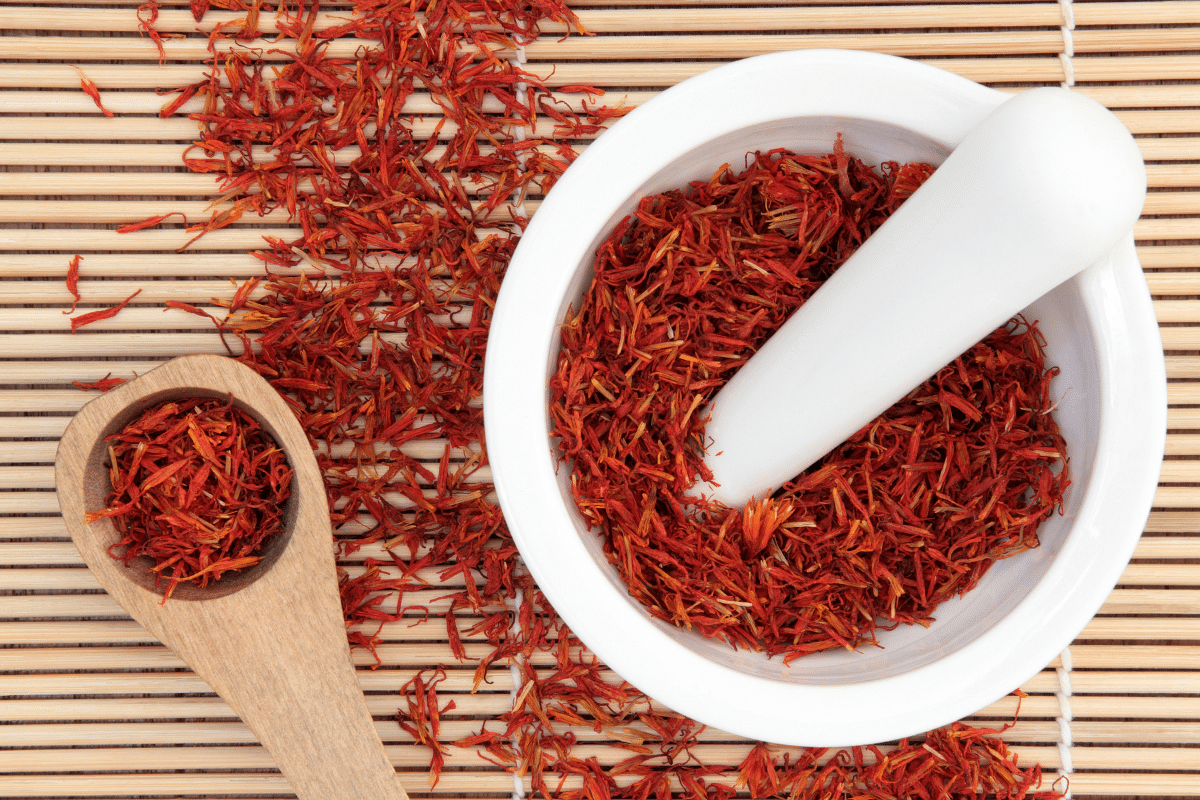
The fragrant aroma it provides is a major bonus, too! That comes at a rather steep price, though, because saffron is known as the most expensive spice in the world.
Best to add it toward the end of cooking so its flavor remains potent. A small pinch of saffron is usually enough for one dish because it tends to have a slightly pungent flavor when used in excess.
Dry Mustard
Dried mustard seeds are ground up to produce this tasty spice. It has a very mild flavor, and is distinct from turmeric, because it has a bit of a nutty taste.
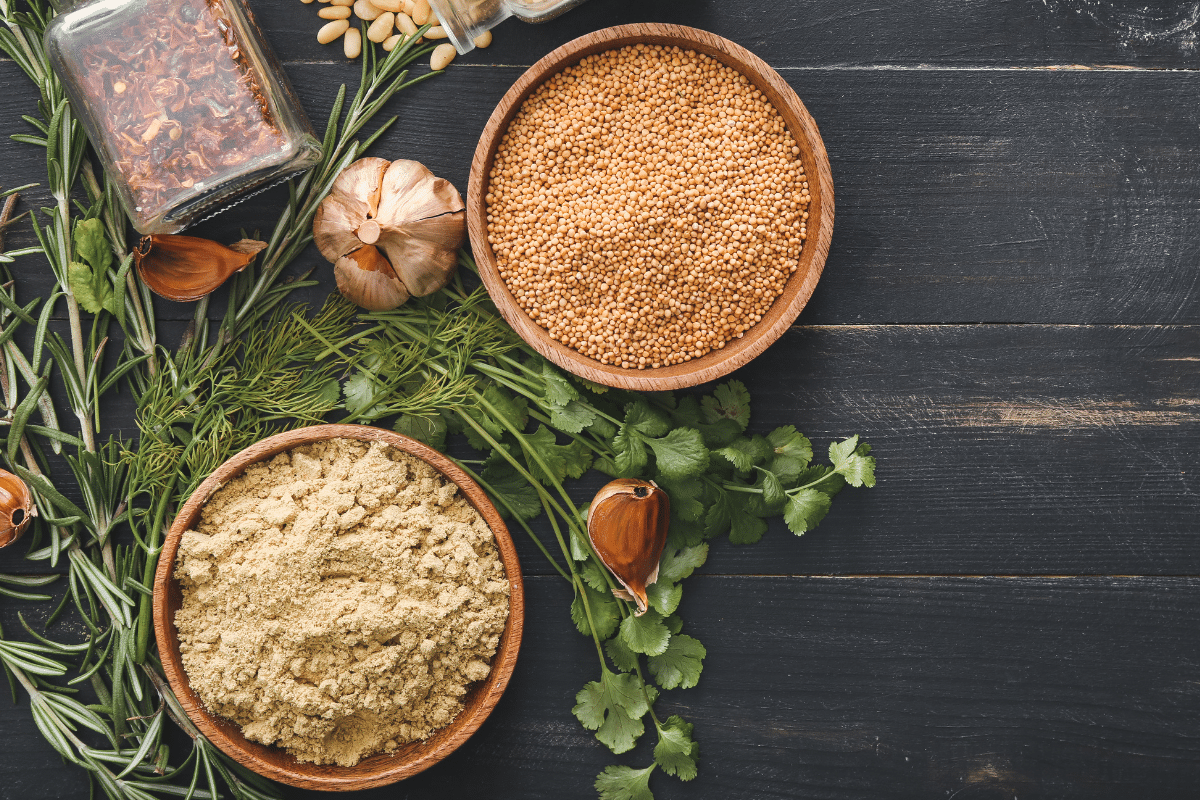
However, if you’re looking for another spice to mimic the color of turmeric in a dish, dry mustard is one of the best options out there.
How to Use Turmeric Substitutes
When it comes to flavor, nothing can provide the exact taste you get from turmeric. Because it has a milder flavor than most spices, you must make some adjustments for the most suitable alternatives.
For spices with a more intense flavor, like ginger powder and ground cumin, I always add just half the amount of the turmeric needed. So if the recipe says one teaspoon of turmeric powder, start with just 1/2 teaspoon of these alternatives. The same goes for curry powder since it includes other spices that will slightly alter the outcome of a dish.
However, start with much less when it comes to using galangal powder. Galangal’s peppery flavor notes are more powerful, so start with as little as 1/4 teaspoon of galangal powder if the recipe needs a teaspoon of turmeric powder.
When you’re using the smoked paprika and mace blend to replace turmeric, you can use a 1:1 ratio. To clarify, this means a combination of half a teaspoon each of smoked paprika and mace.
As a general rule when substituting any spice, start with a lesser amount than what is mentioned in the recipe. This gives some wiggle room to adjust the flavor of a dish.
Health Benefits of Turmeric Alternatives
Turmeric has been widely used not just in cooking, but for health purposes as well. It’s known for its anti-inflammatory properties, and research indicates it may help relieve some digestive issues.
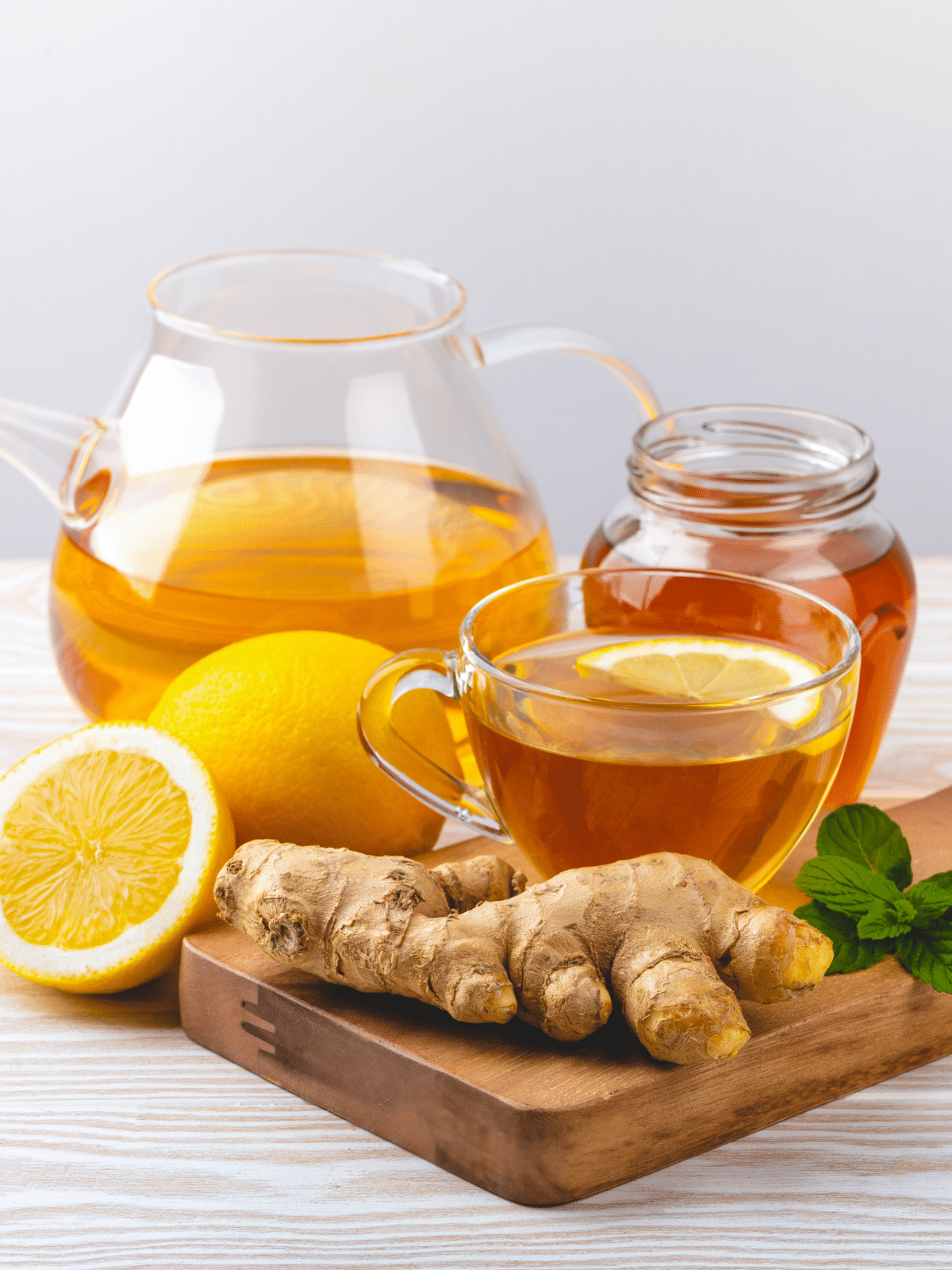
So, when looking for a turmeric substitute when making tea, a healthy smoothie, or a soup, I prefer sticking to its cousins ginger and galangal. Ginger is a popular tea ingredient because it’s known to aid digestion and relieve bloating, while galangal is rich in antioxidants.
FAQs
It has a pleasant bitter taste because of its earthy and musky flavor profile. But if you use just enough turmeric, it shouldn’t be overpowering because it’s also known for having a milder flavor.
It depends on the recipe you’re using. Most South Asian curry dishes are familiar with the bright yellow or deep orange color, and that’s because turmeric is a major component in widely used curry spice blends.
Turmeric’s overall flavor profile is on the more subtle side, so you can combine it with one or more spices depending on the taste, aroma, and color you’re going for.
I find that combining ground turmeric and cumin works great for stews and vegetable dishes. Paprika also works well with turmeric in spice rub blends and meat marinades.
Ideas for Cooking With Turmeric Substitutes
Thanks to turmeric being often included in spice blends for curry dishes, stews, and marinades, it’s quite easy to find a good alternative. Though the flavor and color might change, most of the substitutes for turmeric will still provide an appetizing aroma, taste, and visual presentation.
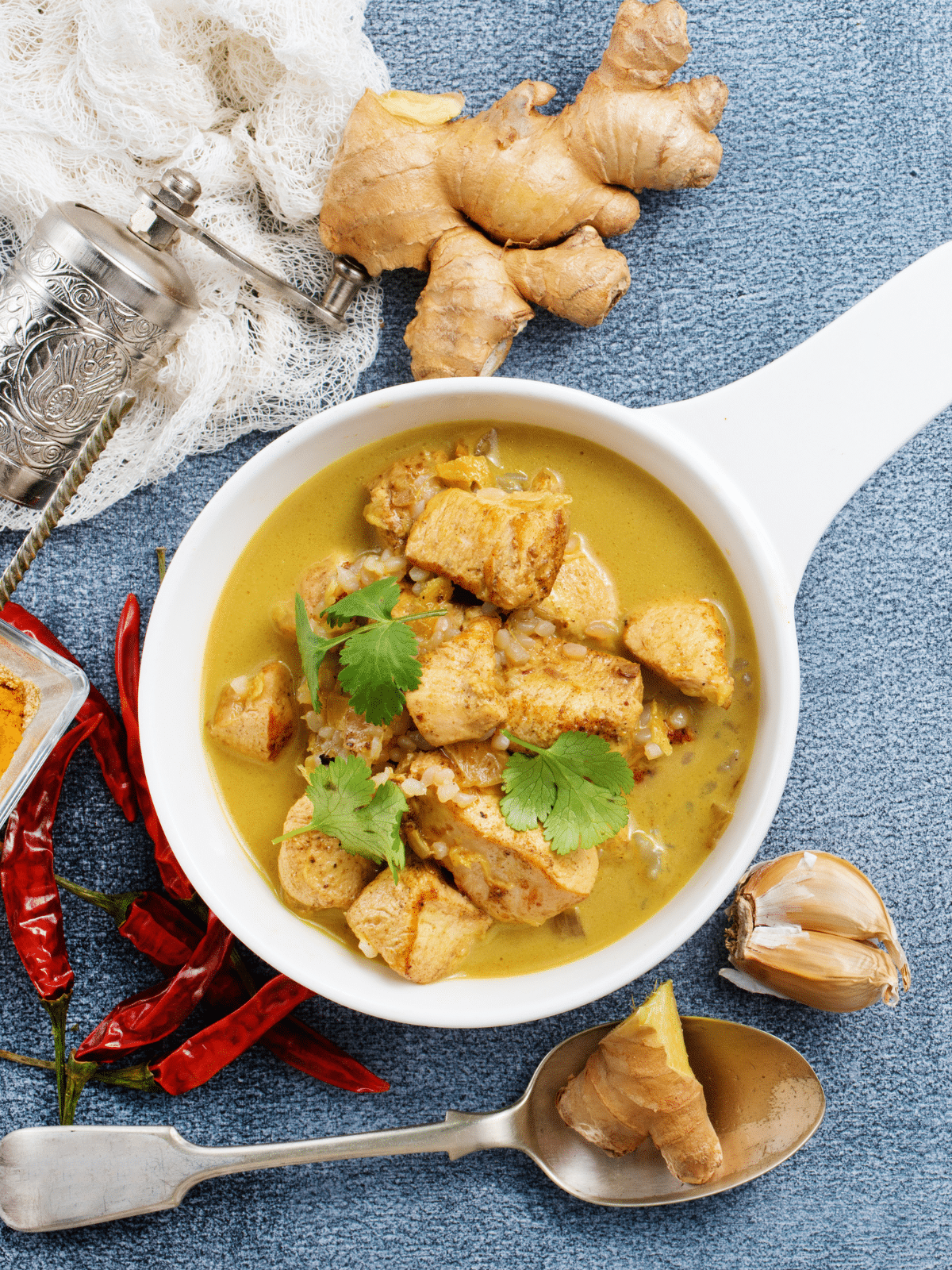
So go ahead and try one (or two) of these substitutes for turmeric the next time you make tandoori chicken at home. These alternatives will also go incredibly well for our Air Fryer Chicken Shawarma recipe.

